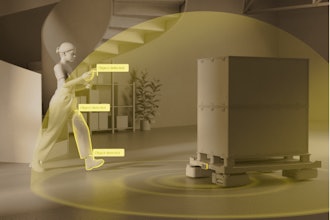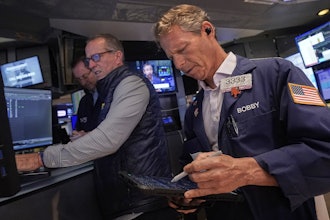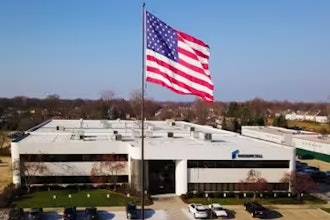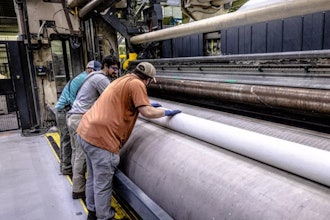Thursday, October 14, 2010; Arlington, VA -- The U.S. manufacturing sector has held up well during an uneven economic recovery and should continue to expand, but likely at a slower pace, according to the quarterly Manufacturers Alliance/MAPI Survey on the Business Outlook -- September 2010 (ER-709), a leading indicator for the industrial sector. The September 2010 composite index fell slightly to 77 percent from a record high 81 percent in the June 2010 report. It marks the fourth straight quarter it has reached 50 percent or above, the benchmark between contraction and expansion. The index started as a quarterly series in 1991.
In year-over-year comparisons, the current index is over twice that of the 38 percent in the September 2009 survey, signaling an impressive turnaround for industry.
While a variety of individual indexes are included in the survey, the business outlook index is a weighted sum of U.S. shipments, backlogs, inventories, and profit margin indexes. The 12 individual indexes were mixed, with some declining and others advancing.
The September survey each year marks the first time executives are queried about expectations for the following calendar year in a number of areas.
The U.S. investment index is based on expectations of executives regarding capital investment for 2011 compared to 2010. The index was 80 percent, a significantly improved outlook from 47 percent in the September 2009 survey. The non-U.S. investment index, based on expectations regarding capital expenditures abroad in 2011, was a solid 73 percent, easily outpacing last year’s 52 percent for 2010.
The research and development (R&D) index reflects the views of survey participants regarding R&D spending in 2011 compared to 2010. The R&D index was 70 percent, well above the 49 percent in the September 2009 report. Finally, the annual orders index, based on a comparison of expected orders for all of 2011 with orders in 2010, came in at 86 percent, an impressive advance from 66 percent a year ago.
The remaining indexes were measured against the June 2010 survey.
One component, the profit margin index, reached a record high of 87 percent in September, above the 78 percent in MAPI’s June report and surpassing the previous all-time high of 82 percent in the March 2006 survey. The capacity utilization index, based on the percentage of firms operating above 85 percent of capacity, improved to 28.1 percent in the current survey from 20 percent in June. While still below the long-term average utilization rate of 32 percent, it extends an upward trend for an index that had reached a record low of 7 percent in December 2009.
A handful of indexes declined but remained above 50 percent.
The quarterly orders index, based on a comparison of expected orders in the third quarter of 2010 with those in the same quarter one year ago, slipped to 89 percent from a record high 97 percent in the June survey.
The backlog orders index, which compares the third quarter 2010 backlog of orders with the
backlog of orders one year earlier, dropped to 81 percent in September from 87 percent in June. An accumulation of backlogs usually occurs when new orders exceed shipments and indicate continued growth in manufacturing.
The export orders index, which compares third quarter 2010 exports with those of third quarter 2009, was 82 percent in September, down marginally from a record high of 85 percent in June. Likewise, the U.S. prospective shipments index, which reflects expectations for fourth quarter 2010 shipments compared with the fourth quarter of 2009, also came off a record high, declining a bit to 90 percent in the September survey from a previous best of 93 percent in the June report.
The non-U.S. prospective shipments index, which measures expectations for shipments
abroad by foreign affiliates of U.S. firms in the fourth quarter of 2010 compared to the same quarter of 2009, edged down to 84 percent from 85 percent.
The inventory index is based on a comparison of inventory levels in the third quarter of 2010 with those of the prior year. It increased to 63 percent in September from 44 percent in June, indicating that inventory destocking has ended for most companies.
In a supplemental component of the survey, respondents were asked their opinion on the outlook for interest rates and whether current rates are influencing the rate of debt.
Most executives (63 percent) indicated that they have increased or are planning to increase their companies’ debt maturities in response to low interest rates, while close to one-fourth (23 percent) said that their company has increased or is planning to increase its reliance on debt financing in response to lower interest rates.
In addition, 69 percent of the respondents do not expect the Federal Reserve will raise the Federal Funds rate until sometime in the second half of 2011 or until after 2011, and 66 percent expect the same for longer term interest rates. Finally, given five options, 50 percent of the respondents believe that stronger economic growth will be the primary driver of higher long-term interest rates, while 21 percent believe it will be the result of Federal Reserve monetary policy.
The survey reflects the views on current and future business conditions of 62 senior financial executives representing a broad range of manufacturing industries.
For more information, visit www.mapi.net
In year-over-year comparisons, the current index is over twice that of the 38 percent in the September 2009 survey, signaling an impressive turnaround for industry.
While a variety of individual indexes are included in the survey, the business outlook index is a weighted sum of U.S. shipments, backlogs, inventories, and profit margin indexes. The 12 individual indexes were mixed, with some declining and others advancing.
The September survey each year marks the first time executives are queried about expectations for the following calendar year in a number of areas.
The U.S. investment index is based on expectations of executives regarding capital investment for 2011 compared to 2010. The index was 80 percent, a significantly improved outlook from 47 percent in the September 2009 survey. The non-U.S. investment index, based on expectations regarding capital expenditures abroad in 2011, was a solid 73 percent, easily outpacing last year’s 52 percent for 2010.
The research and development (R&D) index reflects the views of survey participants regarding R&D spending in 2011 compared to 2010. The R&D index was 70 percent, well above the 49 percent in the September 2009 report. Finally, the annual orders index, based on a comparison of expected orders for all of 2011 with orders in 2010, came in at 86 percent, an impressive advance from 66 percent a year ago.
The remaining indexes were measured against the June 2010 survey.
One component, the profit margin index, reached a record high of 87 percent in September, above the 78 percent in MAPI’s June report and surpassing the previous all-time high of 82 percent in the March 2006 survey. The capacity utilization index, based on the percentage of firms operating above 85 percent of capacity, improved to 28.1 percent in the current survey from 20 percent in June. While still below the long-term average utilization rate of 32 percent, it extends an upward trend for an index that had reached a record low of 7 percent in December 2009.
A handful of indexes declined but remained above 50 percent.
The quarterly orders index, based on a comparison of expected orders in the third quarter of 2010 with those in the same quarter one year ago, slipped to 89 percent from a record high 97 percent in the June survey.
The backlog orders index, which compares the third quarter 2010 backlog of orders with the
backlog of orders one year earlier, dropped to 81 percent in September from 87 percent in June. An accumulation of backlogs usually occurs when new orders exceed shipments and indicate continued growth in manufacturing.
The export orders index, which compares third quarter 2010 exports with those of third quarter 2009, was 82 percent in September, down marginally from a record high of 85 percent in June. Likewise, the U.S. prospective shipments index, which reflects expectations for fourth quarter 2010 shipments compared with the fourth quarter of 2009, also came off a record high, declining a bit to 90 percent in the September survey from a previous best of 93 percent in the June report.
The non-U.S. prospective shipments index, which measures expectations for shipments
abroad by foreign affiliates of U.S. firms in the fourth quarter of 2010 compared to the same quarter of 2009, edged down to 84 percent from 85 percent.
The inventory index is based on a comparison of inventory levels in the third quarter of 2010 with those of the prior year. It increased to 63 percent in September from 44 percent in June, indicating that inventory destocking has ended for most companies.
In a supplemental component of the survey, respondents were asked their opinion on the outlook for interest rates and whether current rates are influencing the rate of debt.
Most executives (63 percent) indicated that they have increased or are planning to increase their companies’ debt maturities in response to low interest rates, while close to one-fourth (23 percent) said that their company has increased or is planning to increase its reliance on debt financing in response to lower interest rates.
In addition, 69 percent of the respondents do not expect the Federal Reserve will raise the Federal Funds rate until sometime in the second half of 2011 or until after 2011, and 66 percent expect the same for longer term interest rates. Finally, given five options, 50 percent of the respondents believe that stronger economic growth will be the primary driver of higher long-term interest rates, while 21 percent believe it will be the result of Federal Reserve monetary policy.
The survey reflects the views on current and future business conditions of 62 senior financial executives representing a broad range of manufacturing industries.
For more information, visit www.mapi.net


















